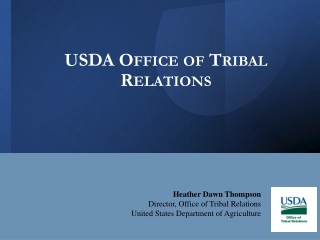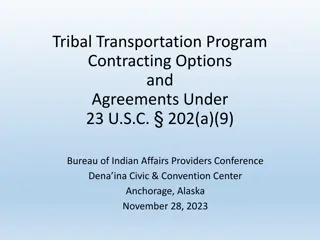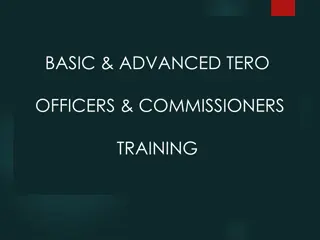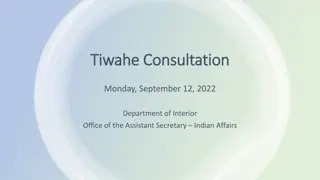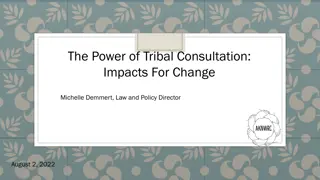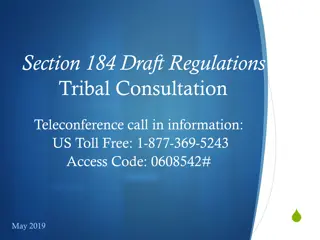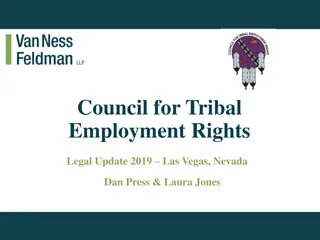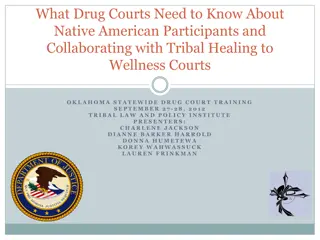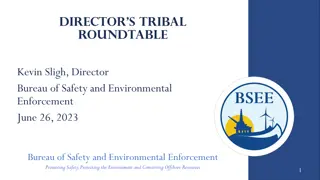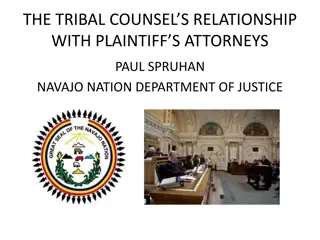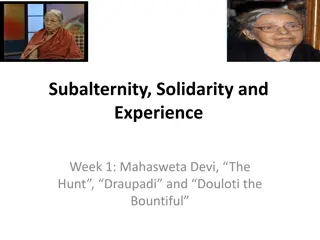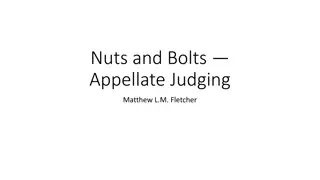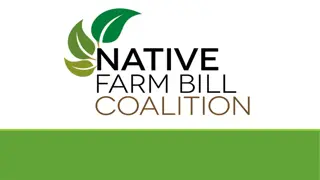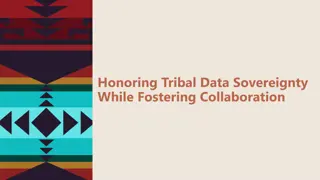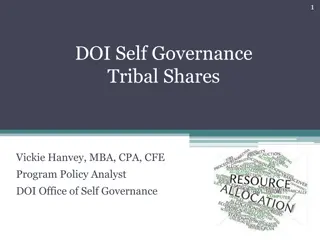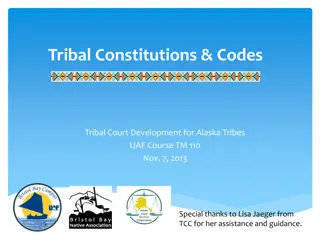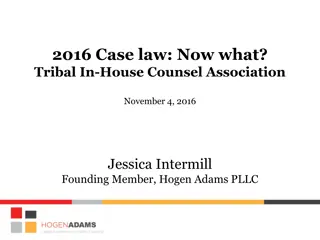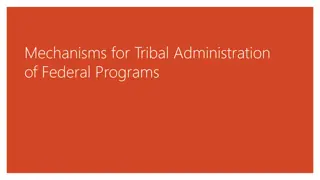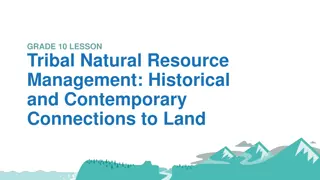Integrating Tribal Expertise into Cultural Resource Processes
This project, NCHRP 25-25 Task 114, focuses on incorporating tribal perspectives and expertise into the Section 106 process of the National Historic Preservation Act for surface transportation projects. The research objective is to understand how tribal knowledge informs the identification, evaluation, and recording of cultural resources, emphasizing active tribal participation in planning processes. Task 114 addresses various aspects, including the identification of historic properties, assessment of effects, resolution of adverse effects, and development of transportation plans.
Download Presentation

Please find below an Image/Link to download the presentation.
The content on the website is provided AS IS for your information and personal use only. It may not be sold, licensed, or shared on other websites without obtaining consent from the author. Download presentation by click this link. If you encounter any issues during the download, it is possible that the publisher has removed the file from their server.
E N D
Presentation Transcript
INTEGRATING TRIBAL EXPERTISE INTO PROCESSES TO IDENTIFY, EVALUATE, AND RECORD CULTURAL RESOURCES NCHRP 25-25, Task 114
This project was guided by a technical working group that included: Jody L. Brown California Department of Transportation (Chair) Jeani L. Borchert North Dakota Department of Transportation Rhonda Fair Oklahoma Department of Transportation Heather Mustonen Georgia Department of Transportation Benjamin Rhodd Rosebud Sioux Tribe Haley Rush Cox/McLain Environmental Consulting, Inc. Jason Watkins Ohio Department of Transportation Stephanie Stoermer Federal Highway Administration (Liaison) Melissa A. Savage AASHTO (Liaison) 2 The project was managed by Ann Hartell, NCHRP Senior Program Officer.
PROJECT BACKGROUND 3 NCHRP 25-25, Task 114
Project Background The research objective of NCHRP 25-25, Task 114 is to understand and detail how tribal perspectives and expertise could and does inform the requirements and intent of the Section 106 process of the National Historic Preservation Act (NHPA) for surface transportation projects, and also early transportation planning (i.e., long- range planning through project programming in Transportation Improvement Plans and State Transportation Improvement Plans). 4
continued Project Background Task 114 focuses on the active participation of tribes in the Section 106 process and the planning process, and how best to incorporate unique tribal expertise and perspectives into: The identification of historic properties [including identification of area of potential effects (APE) and inventory of the APE]; Defining the level of effort to identify historic properties, and evaluating National Register eligibility; The assessment of effects (including making findings of no historic properties affected, no adverse effect, and adverse effect); 5
continued Project Background The resolution of adverse effects, including the monitoring of agency implementation of commitments for resolving adverse effects stipulated in agreement documents; and The development of transportation plans (e.g., long- range plans, corridor studies, project programming). 6
PROJECT APPROACH 7 NCHRP 25-25, Task 114
Project Approach For background research, the project team conducted a literature review and also discussed the project objectives with The National Association of Tribal Historic Preservation Officers (NATHPO); The Advisory Council on Historic Preservation (ACHP) Tribal Liaison; The Federal Highway Administration (FHWA) Federal Preservation Officer (FPO) and the Advisory Council on Historic Preservation s (ACHP s) FHWA Liaison; The Transportation Research Board (TRB) Tribal Issues in Transportation Committee (ABE80); and The AASHTO Tribal Liaison Community of Practice. 8
continued Project Approach Next, the project team created an online questionnaire for state DOTs, FHWA, and a separate questionnaire for tribes, including: 23 state DOT respondents, 18 FHWA division offices respondents, and 31 tribal respondents. To follow up on the online surveys, the team conducted interviews of a select group of state DOTs and reached out to all the online survey-responding tribes, in addition to tribes as recommended by the project panel. 9
RESEARCH RESULTS 10 NCHRP 25-25, Task 114
Research Results The literature review and discussions with NATHPO staff, ACHP staff, the FHWA FPO, and ABE80 identified several roadblocks to facilitating the integration of tribal expertise into the Section 106 process and early planning. These roadblocks include: 11 Tribal responsiveness because of capacity issues including lack of financial and personnel resources. Lack of trust between tribes and agencies. Conflicting perspectives on data and information acquisition and sensitivity.
continued Research Results Task 114 survey questionnaires and interviews identified possible solutions to these and related roadblocks. These solutions include: Enhance the capacity of tribes to contribute their expertise to project development by compensating tribes for their participation in the same way an agency would pay a consultant. These financially compensated activities might include inventory/survey (including consultation with elders and other experts), evaluations of identified places of religious and cultural significance, and development and implementation of measures to resolve adverse effects. 12
continued Research Results Dedicated agency staff such as a tribal liaison. A liaison is generally involved in the entire project delivery process, from early planning (e.g., long-range planning, corridor planning, project programming, etc.) to project completion. 13
continued Research Results Collaborative development of memoranda of understanding or protocols detailing the use of tribal expertise both in early planning and project development. When appropriate and agreed upon, these protocols can also be codified in formal Section 106 agreement documents as part of Section 106 reviews. 14 Protocols can also be used in laying out process for addressing information and data acquisition and sensitivity issues.
continued Research Results Opportunities for face-to-face interactions and discussions during all aspects of project delivery, from early planning to resolution of adverse effects. Providing a continuous feedback loop to tribes on how their expertise is used in all aspects of early planning and project development decision-making. 15
Why Integrate Tribal Expertise into Early Transportation Planning and All Steps in the Section 106 Process? 16 NCHRP 25-25, Task 114
STUDY PROJECT TEAM 17 NCHRP 25-25, Task 114
Study Project Team Hope Luhman WSP USA Inc. Terry Klein SRI Foundation 18
Thank you! 19 For More Information: https://apps.trb.org/cmsfeed/TRBNetProjectDisplay.asp?ProjectID=4484


